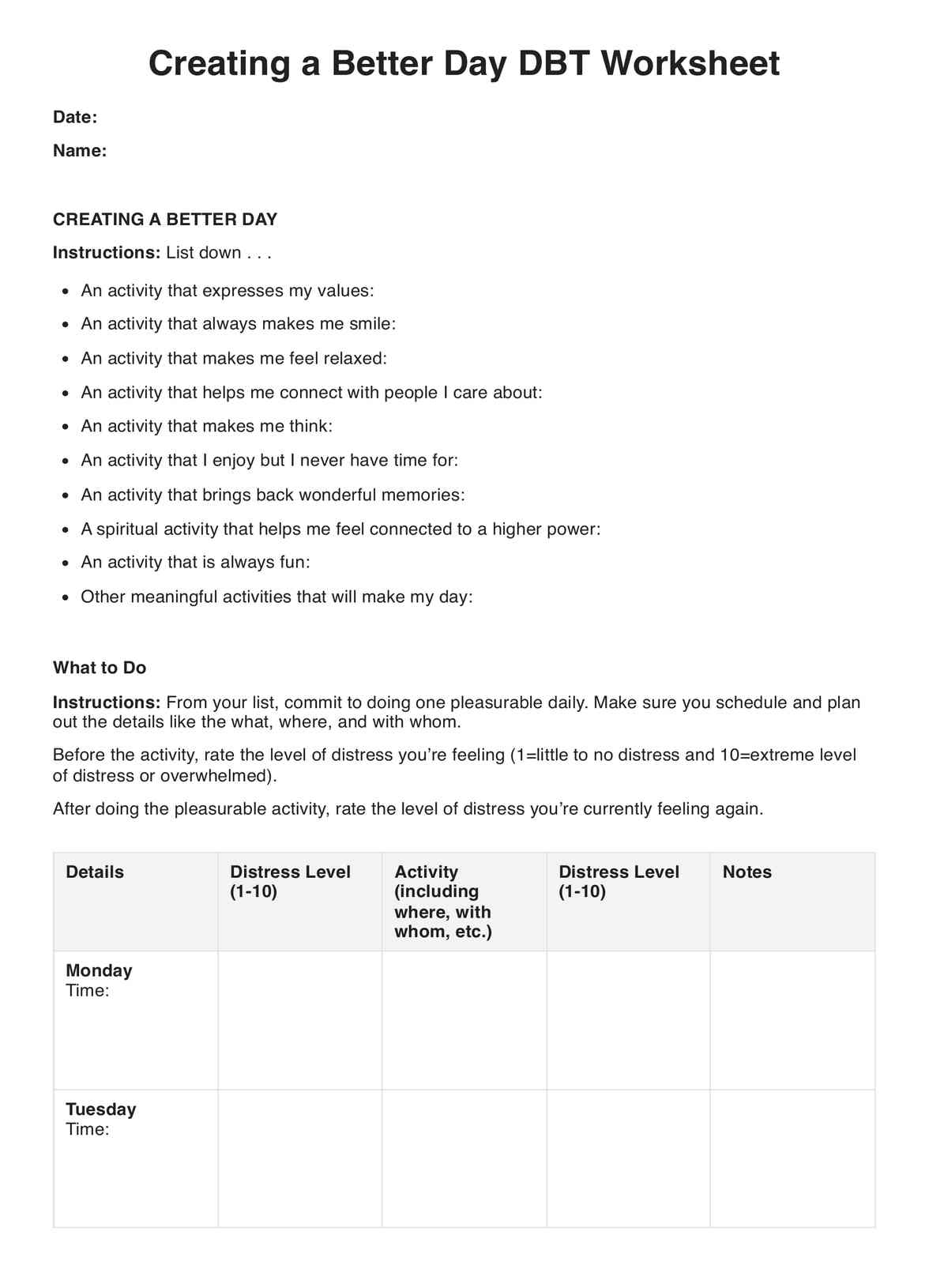It usually takes around an hour to accomplish the Creating a Better Day DBT Worksheet.

Help your client identify activities they can resort to when they’re having a hard time or need to end their day positively with the Creating a Better Day DBT Worksheet.
It usually takes around an hour to accomplish the Creating a Better Day DBT Worksheet.
The practitioner can provide this guide to help clients hone their distress tolerance skills. Meanwhile, the client can use this as a guide that can provide a structure within their day and remind themselves of the pleasurable activities they can do to cope with tough times within their day.
It’s best used when a patient is having a bad day or is going through challenging times and need to find healthier coping mechanisms.
EHR and practice management software
*No credit card required
Free
$0/usd
Unlimited clients
Telehealth
1GB of storage
Client portal text
Automated billing and online payments